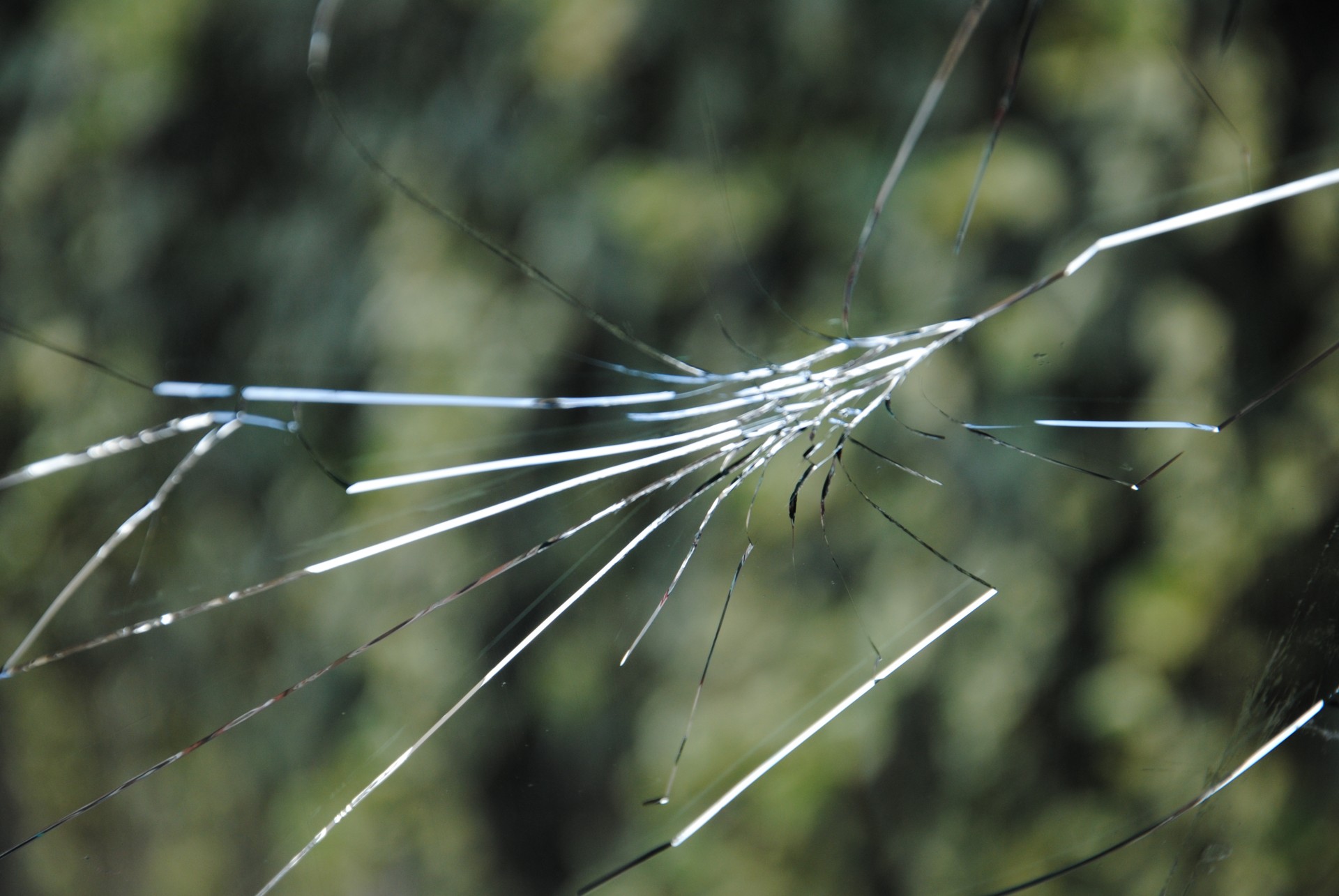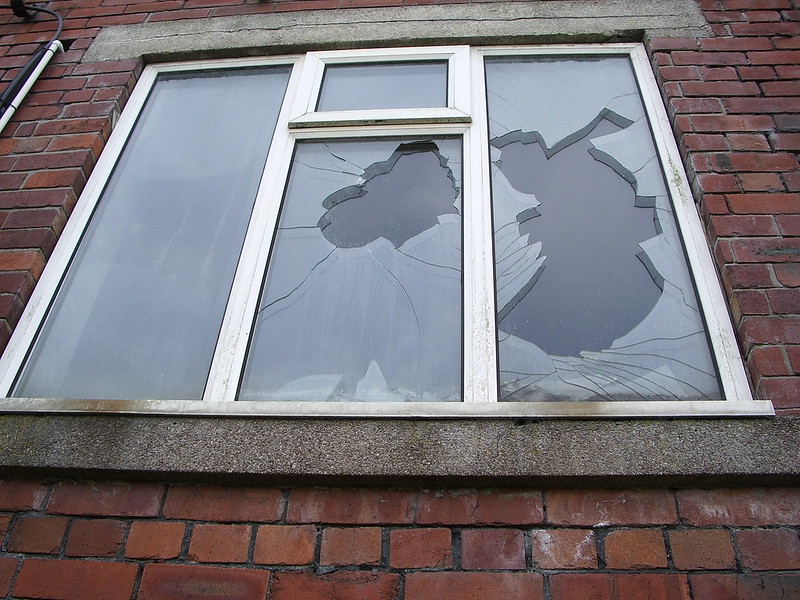Spontaneous cracking is an occupational (although rare) hazard of many double-glazed windows – particularly those at the cheaper end of the market. At any time of year, a window might suddenly decide to collapse inward, causing an unsightly (and heat-inefficient) shatter effect.
What causes this peculiar phenomenon to occur? While it might seem like the window cracked for no reason, there is always an underlying cause at play. In this article, we’ll shed some light on the subject.
How does double glazing work?
In order to understand why a double glazed window might crack, it’s worth considering how double glazing is constructed. Two sheets of glass are placed either side of a vacuum – or a layer of inert gas like argon – through which heat has difficulty moving. This creates a barrier which helps to contain (or repel) heat, and thereby keep your home at a stable temperature – and your energy costs down.
A double-glazed window is a sealed unit, which means that the pressure within it is constant, in contrast with the air pressure on the other side of the glass. This means that the glass will be under constant, very mild pressure. You might notice the glass of a double-glazed window slightly deform inwards, depending on the pressure outside. In most circumstances, the glass will be strong enough to withstand this pressure. But, in some cases, it won’t and stress cracks can appear – leaving you with double glazed windows cracked on the inside.
It’s revealing that the peak time for double glazing breakages is during winter. This is a time of year that we experience colder outdoor temperatures – and we try to compensate for this indoors by using central heating. This creates a big difference in temperature on either side of the glass.
What factors increase the risk of cracked double-glazed windows?
Aspect ratio
Square (or even round) windows are at the lowest risk of suffering a break. Why might this be? The answer lies in flexibility. Shorter panes of glass have less opportunity to flex than larger panes. A tall, narrow window, then, will be at the greatest risk of cracking.
Manufacturing error
As commonplace a technology as double glazing now is, it’s still something that requires precise engineering in order to get right. There are many different practices and environmental factors at the point of manufacture which can produce short-lived windows.
Scratches
Creating windows involves, inevitably, cutting glass, but it’s important that these cuts occur only precisely where they’re meant to. Even a tiny, imperceptible scratch at the centre of a pane of glass can create a weak point which the elements might later expose. This risk is greater when the cuts required are more complex, such as in bevelled glass.
Temperature and humidity
We’ve already mentioned how breakages become more likely when the temperatures on either side of the glass contrasts greatly, but what about the temperature of the gas inside the unit? If a double-glazed window is created on a hot summer’s day, when the atmospheric pressure is low, then it’ll be at greater risk during the winter.
The same is true of the moisture within the unit. Double glazing manufacturers use a special substance known as a desiccant to absorb all of this moisture and prevent condensation droplets from forming inside the window. But this process, too, changes the pressure within the window, and so windows created on hot, humid days will be at greater risk of cracking when the temperature drops.
Not all desiccants are created equally, and some manufacturers look to slash prices by opting for cheaper alternatives. Such desiccants will absorb not only water, but large amounts of nitrogen – which exacerbates any changes in pressure.
Strength of the glass
Of course, the odds of a window cracking can be reduced if the glass is of sufficient strength. A thicker sheet of glass will be far more resistant to stress cracks than a thin one, so it’s often worth choosing a 6mm pane instead of the more common 4mm. When making this decision, however, you should be aware of where the stress is likely coming from. That will depend on how your house is arranged.
In order to reduce the impact of these environmental factors, it’s vital that manufacturers employ environmental controls in their factories. While it’s impossible to eliminate the problem altogether, it is possible to reduce the likelihood of a break to the point of negligibility. A good manufacturer will offer a lengthy guarantee against (seemingly) spontaneous window cracks.
Heat coming from outside
When it comes to stress on a pane of glass, it’s useful to think not only in terms of quantity, but of concentration. Dispersing heat across the glass will reduce the impact that a concentrated beam of sunlight might have.
In the UK, sunlight comes from the south. This means that during winter, south-facing windows are at greater risk of cracking. Overnight, the glass will cool (in some cases to sub-zero temperatures) – and then a beam of sunlight will suddenly appear. The centre area will experience a sharp rise in temperature – but for the corners, which are still in shadow, this rise will be much milder. This temperature difference across the glass will place it under much greater stress, and increase the chances of the window cracking.
In order to disperse the heat on those cold winter days, it’s worth placing a pale-coloured blind or curtain inside the glass. This will help to reflect heat back onto the glass, helping to more evenly distribute the heat.
Heat coming from inside
Winter is also a time where windows are expected to cope with large changes in temperature from within, as central heating kicks in. The biggest threats to your windows from within come in the form of acute, local thermal shock; typically from a radiator or fireplace right next to your window.
If you’ve got an under-window radiator, then it’s worth providing some protection in the form of curtains which fall behind the radiator, and protect the window from thermal shock. You’ll also want to ensure that there is adequate airflow to the window from the rest of the room.
Looking for new windows? View our sliding sash windows, conservation casement windows, or our high-performance casement windows.





